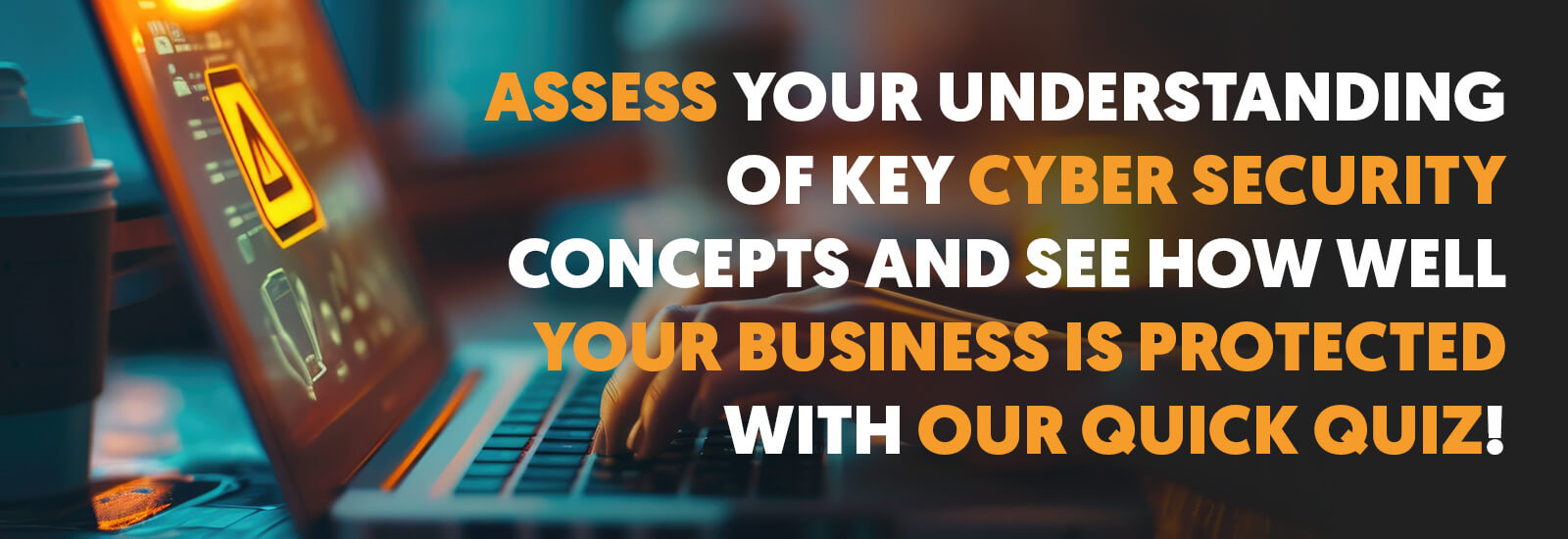INTRODUCTION
In today’s digital age, cybersecurity has become a critical concern for small to medium-sized businesses (SMBs) across the globe – and the UK, with its advanced technological infrastructure, is no exception. As cyber threats continue to evolve, the role of cybersecurity employee training has never been more crucial.
This article explores the importance of employee training in cybersecurity, and how you can lead the way in fostering a secure digital environment for your business.
The importance of cybersecurity training
Cybersecurity threats are diverse and evermore complex. They range from phishing attacks and malware to sophisticated ransomware and advanced persistent threats (APTs). In the UK, small businesses face a myriad of cyber threats daily, with phishing attacks being particularly prevalent.
“Humans are targets with 36% of data breaches involving phishing. We know humans can make mistakes, and some 90% of data breaches involve human error” Comments Andrew Hookway, MD of Managed Services Security Providers, Extech Cloud.
Andrew adds “These statistics highlight the importance for robust cybersecurity measures, including comprehensive employee training programmes.”. These statistics highlight the need for robust cybersecurity measures, including comprehensive employee training programmes.
Employee training is fundamental to effective cybersecurity. Well-trained employees can function as the first line of defence against cyberattacks.
Training helps employees recognise potential threats, understand the importance of cybersecurity protocols, and respond appropriately to incidents. Without proper training, employees may inadvertently become the weakest link in the cybersecurity chain.
Role of employees in cybersecurity
Employees can play a pivotal role in maintaining cybersecurity, if sufficiently trained, as they are often the target of cyberattacks, such as phishing and social engineering.
By equipping them with the knowledge and skills to identify and mitigate these threats, SMBs can significantly reduce their risk of cyber incidents.
Training programs should focus on practical skills, such as recognising phishing emails, understanding the importance of strong passwords, and following best practice for data protection.
Human error in cyber incidents
Human error remains a leading cause of data breaches, which highlights the critical need for ongoing training to raise employee cybersecurity awareness and minimise mistakes that may lead to breaches.
By addressing human vulnerabilities through targeted training, SMBs can enhance their overall cybersecurity.
Key components of effective cybersecurity training
Regular workshops and seminars
Regular workshops and seminars are essential components of an effective cybersecurity training program. These sessions provide employees with up-to-date information on the latest cyber threats and best practice for mitigating them.
Workshops can be tailored to address specific threats relevant to individual businesses to ensure employees are well-prepared to manage potential incidents.
Simulated phishing attacks
Simulated phishing attacks are a powerful tool for training purposes. With regular phishing simulations, SMBs can assess employees’ ability to recognise and respond to phishing attempts.
These simulations help identify at-risk employees who may need additional training and reinforce the importance of vigilance in detecting malicious emails.
Policy and compliance training
Employees need to understand and adhere to their company’s cybersecurity policies to be effective, therefore policy and compliance training is crucial. This should cover key standards and regulations, such as ISO 27001 and GDPR, which require regular staff training.
By keeping employees informed about policy requirements and compliance obligations, SMBs can reduce the risk of non-compliance and associated penalties.
Developing a cybersecurity training programme
Assessing the needs
The first step in developing a cybersecurity training program is to assess your business needs. This involves identifying the specific threats to your business and the areas where employees may be most vulnerable.
A thorough in-house assessment will help you develop a tailored program to address the unique risks and challenges of you may face.
Engaging content
Engaging content is key to a successful cybersecurity training program. To achieve this, training materials should be interactive and easy to understand, incorporating elements, such as gamification (game playing), to enhance engagement and encourage employee participation.
In addition, quality content that is relevant and relatable will ensure employees retain the information and apply it on a daily basis.
Measuring training effectiveness
Measuring the effectiveness of cybersecurity training is essential for continuous improvement. Businesses should use metrics such as test scores and pass rates to evaluate the impact of training programs.
Regular assessments will help identify areas where additional training is required and ensure the training program remains effective over time.
Continuous learning and support
Cybersecurity is an ongoing concern, and training should reflect this. Continuous learning and support are vital for keeping employees informed about evolving cybersecurity threats and changes to best practice.
SMEs are particularly vulnerable to cyberattacks and should provide regular updates and refresher courses to ensure employees stay current with the latest developments.
Encouraging a culture of security
Employees should be encouraged to take an active role in maintaining cybersecurity and report any suspicious activity.
By fostering a culture of security through effective human risk management, SMBs can ensure that cybersecurity becomes a shared responsibility across the business.
Challenges in cybersecurity training
Overcoming resistance to training
One of the main cybersecurity training challenges is overcoming resistance from employees. Some employees may view training as a burden or may not see the relevance to their role.
To address this, businesses should emphasise the importance of training and the benefits to everyone involved in the business, including customers. Providing incentives and making training sessions engaging can help reduce resistance.
Keeping up with evolving threats
As cyber threats constantly evolve, keeping up with these changes can be challenging. Training programs must be regularly updated to reflect the latest threats and best practice.
Businesses should stay informed about new developments cybersecurity policy and trends and incorporate this information into their training programs so that employees are always alert and prepared to manage emerging threats.
How Human Risk Management can protect your business
Employee training is a vital component to safeguard your business. Investing in comprehensive training programs allows SMBs to empower their employees with the knowledge to detect and mitigate cyber risks before they become a major problem.
Extech Cloud, with its expertise in Human Risk Management (HRM), is well-positioned to lead the way in promoting effective cybersecurity training. Our service offers a full-circle solution for processing, reducing, and monitoring human cyber risk, without hindering staff productivity.
By addressing human vulnerabilities and fostering a culture of security, our experts can help businesses enhance their cybersecurity posture and protect against the ever-evolving landscape of cyber threats.





